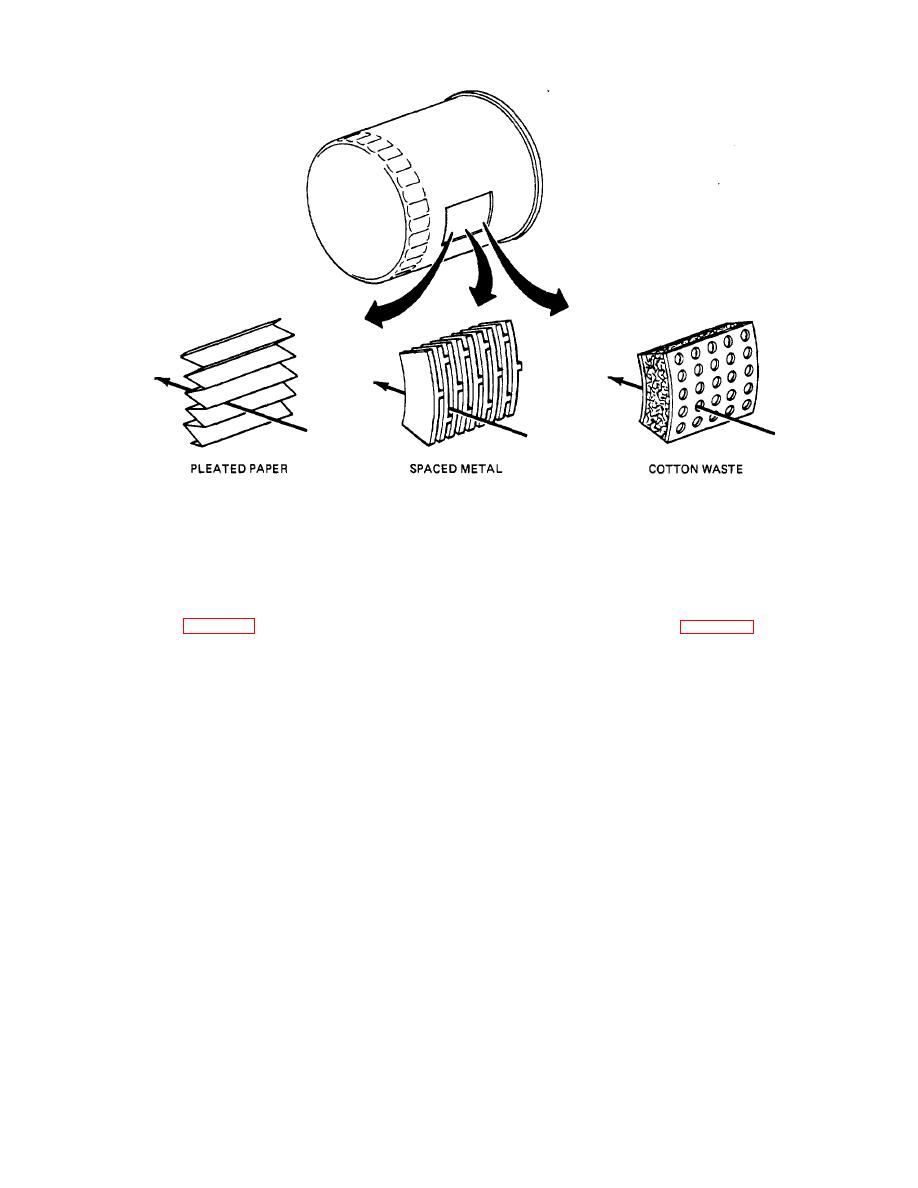
| Tweet |

Custom Search
|
|

|
||
 TM 9-8000
Figure 8-8. Oil Filtering Mediums
through the housing. The regulator is attached to the
consists of a small rod, known as a dipstick, that extends
engine so that the oil will flow through the regulator after
through a tube into the crankcase. It is marked to show
passing through the pump. The oil leaves the regulator
when the crankcase Is full or, if it is low, how much oil is
either heated or cooled, depending on the temperature of
needed. Readings are taken by pulling the dipstick out
the coolant, and then Is circulated through the engine.
and noting how high the level is on it.
c. Oil Cooler (Fig. 8-11). The types of oil coolers
used with combat vehicles consist of a radiator through
will produce pressures In great excess to those
which air Is circulated by movement of the vehicle, or by
necessary. This excess pressure, If uncontrolled, would
a cooling fan. Oil from the engine Is circulated through
cause excess oil consumption due to flooded cylinder
this radiator and back to the sump or supply tank. The
walls and leakage through oil seals. A spring-loaded
radiator will act to cool the oil only In this system. It will
regulator valve is Installed In the lubrication system to
not heat oil in a cold engine.
control pump pressure. The valve will open as the
pressure reaches the value that Is determined by the
8-15. Oil Level Indicator (Fig. 8.12).
The oil level
spring, causing excess oil to be diverted back to the
Indicator Is usually a bayonet type. It
crankcase.
TA233486
8-9
|
||
 |
||